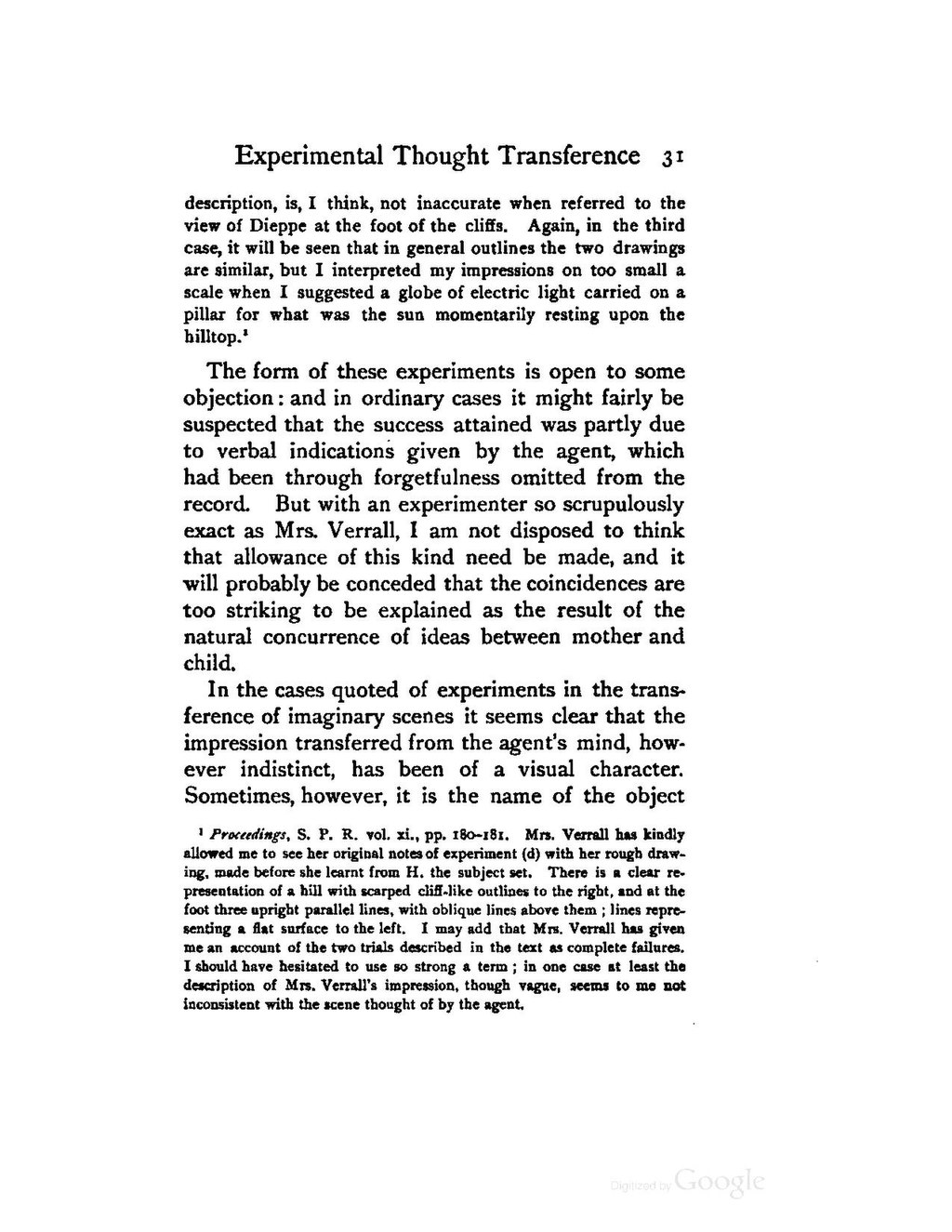description, is, I think, not inaccurate when referred to the view of Dieppe at the foot of the cliffs. Again, in the third case, it will be seen that in general outlines the two drawings are similar, but I interpreted my impressions on too small a scale when I suggested a globe of electric light carried on a pillar for what was the sun momentarily resting upon the hilltop.[1]
The form of these experiments is open to some objection: and in ordinary cases it might fairly be suspected that the success attained was partly due to verbal indications given by the agent, which had been through forgetfulness omitted from the record. But with an experimenter so scrupulously exact as Mrs. Verrall, I am not disposed to think that allowance of this kind need be made, and it will probably be conceded that the coincidences are too striking to be explained as the result of the natural concurrence of ideas between mother and child.
In the cases quoted of experiments in the transference of imaginary scenes it seems clear that the impression transferred from the agent's mind, however indistinct, has been of a visual character. Sometimes, however, it is the name of the object
- ↑ Proceedings. S. P. R. vol. xi., pp. 180–181. Mrs. Verrall has kindly allowed me to see her original notes of experiment (d) with her rough drawing. made before she learnt from H. the subject set. There is a clear representation of a hill with scarped cliff-like outlines to the right, and at the foot three upright parallel lines, with oblique lines above them; lines representing a flat surface to the left. I may add that Mrs. Verrall has given me an account of the two trials described in the text as complete failures. I should have hesitated to use so strong a term; in one case at least the description of Mrs. Verrall's impression, though vague, seems to me not inconsistent with the scene thought of by the agent.
